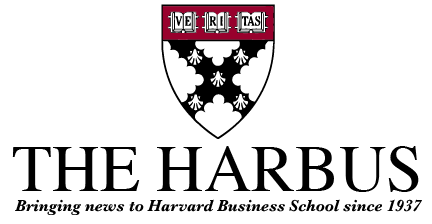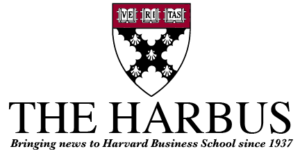Would you like to come and listen to:
-Joe Trippi, former manager of the Dean campaign, and author of “The Revolution Will Not Be Televised”
-Dr. Jason Hwang, co-author with HBS professor Clay Christensen of “The Innovator’s Prescription”
-Dr. Philip Low www.replicabestsale.co.uk, CEO of NeuroVigil and adjunct professor at Stanford School of Medicine
-Dr. Stephen Friend, CEO of Sage Bionetworks and former CEO of Rosetta Inpharmatics
-Dr. Daniel Kraft, from the Stanford Institute for Stem Cell Biology & Regenerative Medicine
-Dr. David Rosenman, Director of Curriculum at the Mayo Clinic Center for Innovation, and assistant professor of medicine at the Mayo Clinic College of Medicine.
.and many other healthcare visionaries, absolutely free? I did, too.
You may already know of the TED conference (//ted.com). TED attracts some of the best and brightest around the world to discuss some of the biggest issues of our time. TED is limited to 1,100 attendees, each of whom, if his or her application to attend is accepted, pays $6,000 to attend tag heuer replica for sale . TEDMED, its healthcare-focused offspring, is limited to 400 attendees, who each pay $4,000 to attend.
This story is not about TED or TEDMED.
In 2008, three friends of mine wanted to meet the people who go to TED, knowing they could not get in themselves. So they planned to go to the bars and restaurants in Monterey and socialize with the TEDsters each evening. Eventually, a group of about thirty people coalesced around the idea. They then realized that they would need something to occupy them during the day. They decided to hold BIL, a free and open counterpart to TED.
This story is about BIL, and its healthcare-focused version, BIL:PIL.
The first BIL (//bilconference.com) was held in 2008, using the unconference model. The unconference model emerged around ten years ago as a novel way for people to gather and discuss a topic. It originally came from the software development community, but has spread to other communities as well, such as government transparency and visual design. Whereas most conferences are closed systems with high barriers to entry, unconferences turn the traditional model on its head by opening it up to everyone. If a traditional conference is like Windows, then unconferences are more like Linux.
Attendance at unconferences is free, and all who wish to share their work and hard-earned insights are accorded the opportunity to do so, venue space permitting. Talks are often recorded and published online so that those who cannot travel to the conference site still have the opportunity to enjoy the experience breitling superocean replica. Webcasting is also popular. Enough money is raised from monetary and in-kind donations to cover the cost of the resources used, such as venue space, food and nametags. Nobody makes money off of an unconference. Speakers and organizers donate their time to create a high-quality experience for all. Current examples of other unconferences are:
Pecha Kucha: //www.pecha-kucha.org/
BarCamp: //barcamp.org
GovCamp: //govcamp.org
HealthCamp: //barcamp.org?HealthCamp
BioCamp: //biocamp.ning.com
BIL 2008 was organized in the span of six weeks entirely using social media-email, wikis, Facebook, and so on. Riffing on TED’s motto, “Ideas Worth Spreading,” BIL adopted the motto, “Ideas Set Free.” Two hundred people came, and fifty delivered talks across a wide range of issues. Enough money was raised from donations and sponsorships to cover the cost of a medium-sized room in Monterey. In fact, a few TEDsters found out and came down the street to give their talks again-free. The event was streamed on the web live, for those who couldn’t get to Monterey.
At BIL 2009, which attracted five hundred people and one hundred speakers, I gave a short talk on personalized medicine, an area of particular interest to me. Later that day, a visiting TEDster told me about TEDMED, happening October 27-30 in San Diego. Unfortunately, due to class conflicts and a thin wallet, I could not attend. So that night in February, we organized a few people and started working on BIL’s complement to TEDMED. We called it BIL:PIL, and scheduled it for October 30-31 in San Diego.
I am working with a small team of committed volunteers and a budget of zero dollars. Through networking and gentle coaxing, we’ve been able to get companies to recognize the need for this conference and make wonderful in-kind donations toward this project. Specifically:
-San Diego State BioScience Center donated several rooms for our speakers to use, including free ubiquitous wireless internet for bloggers.
-WHITECOAT Strategies, a life science PR company, will film and publish the talks on the web.
-MedPageToday, a medical news site, will provide live webcasting for the event.
-The Biotechnology Industry Organization will provide a blogger tent and food for the attendees on Friday.
-Digital Operative, an interactive marketing agency based in San Diego, will provide food for the attendees on Saturday.
-Two local hotels have agreed to provide discounted blocks of rooms for us with no deposit.
We’ve organized ourselves using social media tools such as Google Groups and wikis, and we’ve publicized ourselves through Twitter (@bilpil) and Facebook (facebook.com/bilpil).
The funny thing is: despite having yet to take in or spend a dime, the energy behind the event is hitting a nerve.
Our website (bilpil.com) went live in July. Thirty speakers working at the bleeding edge of healthcare innovation have signed up to speak, including five TEDMED speakers. And we’re still adding more every week. People want to talk about the coming healthcare revolution. We’re letting them do just that.
What about you? Want to hear about the most innovative parts of healthcare? We’d love to have you along for the ride. Find out more at //bilpil.com.
AUTHOR’S BIOGRAPHY
Jonathan Sheffi is a lifelong student with a fiery passion for improving patients’ lives through miracles of biotechnology. Jonathan has spent several years in the biotechnology industry, most recently as a summer intern in the Office of Biotechnology Products within the U.S. Food and Drug Administration Center for Drug Evaluation and Research in Silver Spring, Maryland. He has also worked at Amgen, excelling in both field sales and market research roles. Prior to Amgen, Jonathan consulted for a variety of healthcare companies as part of Accenture’s Health and Life Sciences Strategy practice. He attended MIT as both an undergraduate and graduate student.

